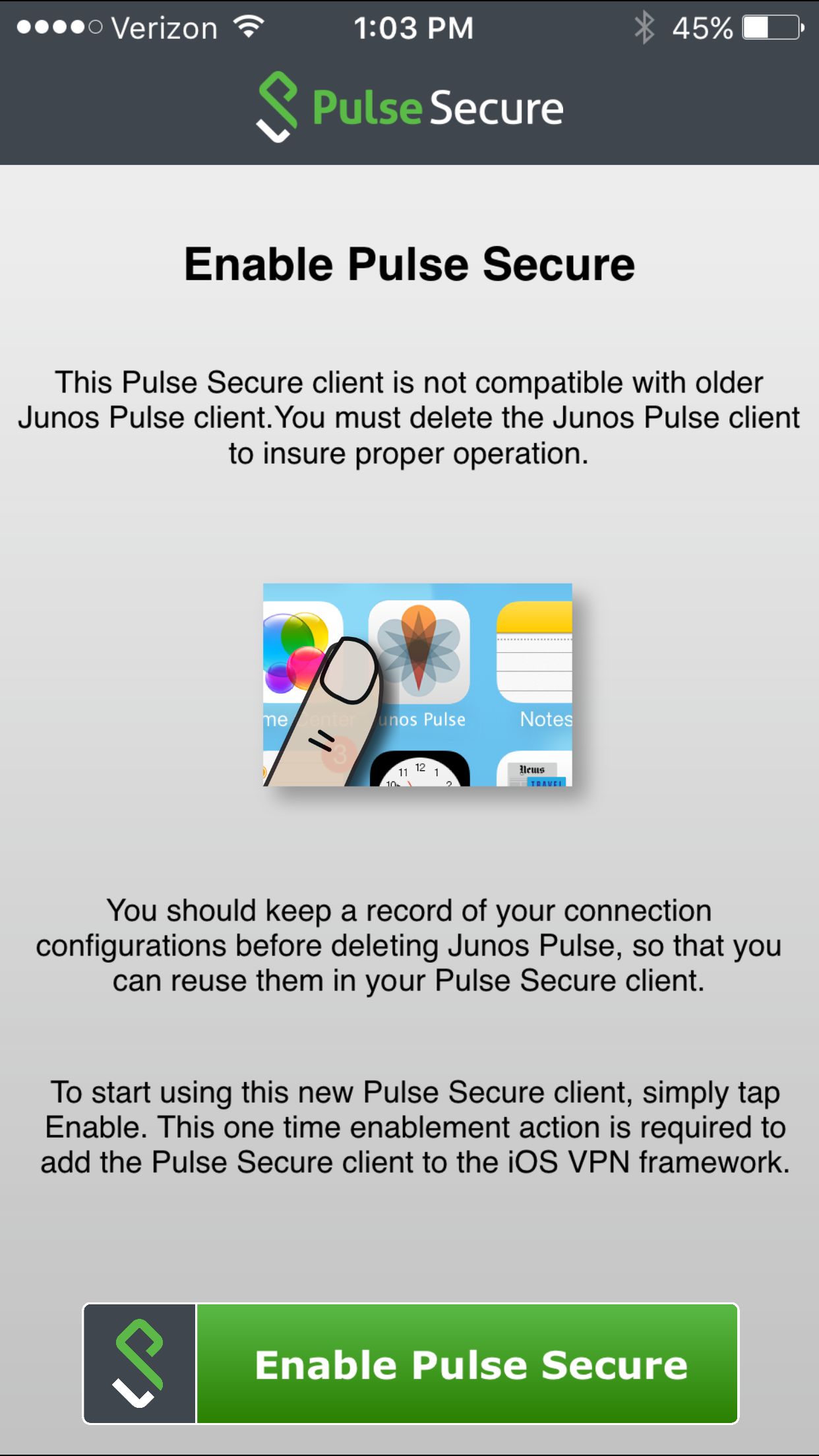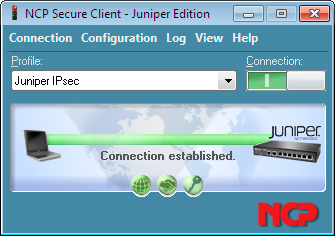As of March 18, 2019, Duo Multi-Factor Authentication isrequiredto use the Pulse VPN service. For more information and to enroll in Duo, please visit:Multi-Factor Authentication
How to connect to VPN using the Junos Pulse Secure client for Mac OS X 9 –To disconnect, right-click on the Pulse Secure icon in the system notification tray, select the System VPN connection profile, then click Disconnect. 10 –Should you want to close the application, right-click on the Pulse Secure icon in the system notification.
- How to connect to VPN using the Junos Pulse Secure client for Mac OS X 9 –To disconnect, right-click on the Pulse Secure icon in the system notification tray, select the System VPN connection profile, then click Disconnect. 10 –Should you want to close the application, right-click on the Pulse Secure icon in the system notification.
- We recommend using b)- VT Traffic over SSL VPN. The procedure below demonstrates connecting to b) - VT Traffic over SSL VPN. In the Mac OS top menu bar, click the Pulse Secure icon. Select b) - VT Traffic over SSL VPN and click Connect. Click Proceed; Type your credentials. In the PID text box, type your VT Username, which is the first part of.
- HMS IT provides secure access to HMS network resources using a virtual private network (VPN). This service is available to HMS quad-based faculty and staff, who are automatically registered—simply download the VPN software from Junos Pulse and follow the instructions to get securely connected.
Download
- Refer to the supported OS list on the FAQ page.
- Download the Pulse Secure client for MacOS here.
Installation
Open the package, click Continue, then Install.
Juniper Vpn Client For Mac

Note: If you are having trouble finding the file after download, trying looking on your desktop or in the downloads folder located in the Dock.
Click Close once installation is completed.
Go to your Applications folder and click on the Pulse Secure icon to start.
Click the plus sign + to make a new connection. Trials in tainted space quinn pregnancy.
Enter a name for the connection.
For Server URL, enter:
vpn.vanderbilt.edu
Click Add.
Click Connect on your newly created connection.
Read the VPN Pre Sign-in Notification and click Proceed.
Enter your VUnetID and ePassword Gajendra moksham full story in telugu pdf. when prompted for login credentials.

Enter your secondary password from Multi-factor Authentication.
While connected, you should see an icon in the status bar.

When you are ready to disconnect, go to the Pulse Secure window and click Disconnect.
Rich Trouton’s Der Flounder blog recently described how to create a pre-configured Junos Pulse VPN client on OS X.
I prefer to use Unixorn’s The Luggage rather than a GUI package creator, so here I adapt Rich’s instructions for The Luggage users.
If you don’t already have The Luggage, install it as follows (as per @grahamgilbert’s blog post The Luggage: An Introduction:
At this point, if you don’t already have git installed, you will be prompted to do so. If that happens, install git and rerun the last command. Then continue:
Now The Luggage is installed, copy your Junos Pulse installer and config file into a new folder:
Create a new file named Makefile in the same folder using whatever editor you use, and populate as follows:
You may wish to sign the package with a developer ID if you are intending to make the installer available to your users for self-install, so that Gatekeeper doesn’t prevent installation. You will need an Apple Mac OS X Developer Account to do this, and have your Developer ID Certificate installed on the machine you are building the package. Then, add the following line as the third line of the Makefile, changing “Your Name” to the name of your certificate in your Keychain:
Create a new file named postinstall in the same folder using whatever editor you use, and populate as follows (this is exactly the same as Rich Trouton’s postinstall file except for the install_dir):
To create the package, run the following command:
You should now have a package named Pulse-Secure-Configured.pkg which you can import into your software distribution system (Munki, Casper etc).
For any package that you wish to make available for distribution via the web or fileshare, you may wish to enclose it in a DMG. I’ve created a script that automates the process of creating a dmg for any pkg file in the same folder. the output includes a visual check to see if the package is signed.
Junos Pulse Vpn Client For Macbook Pro
Contents of dmg-it.sh:
Make it executable, then run it:
Junos Pulse Client
You should now have Pulse-Secure-Configured.dmg in your folder.
Note: This post was updated 04 October 2016. The installed Pulse Secure app is now correctly named Pulse Secure.app, so the script now checks for this as well as Junos Pulse.app.